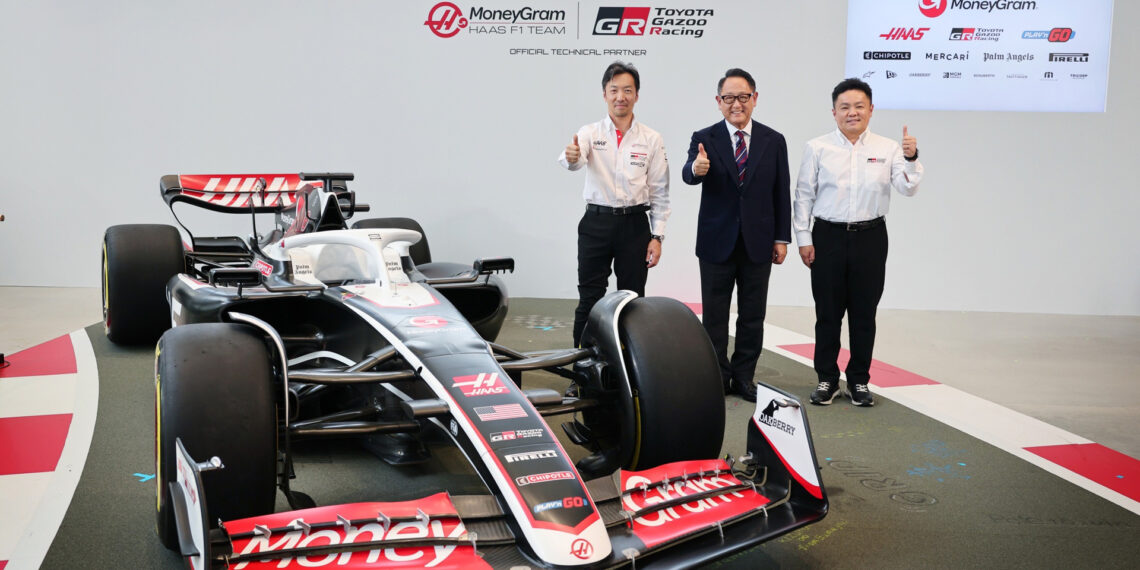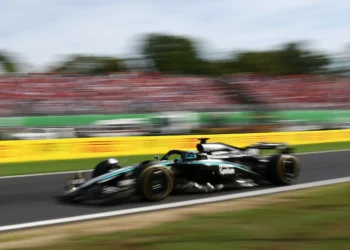Haas Racing’s Race Against Time: Is Their Partnership with Toyota Too Late for F1’s 2026 Shift?
In a dramatic twist that could reshape the future of Haas F1, the American racing team has forged a partnership with Toyota. But as the clock ticks down to the monumental 2026 rule changes, the question looms large: has this alliance come too late?
Last October, Haas and Toyota unveiled their ambitious collaboration, promising to “Share Knowledge and Resources for Mutual Benefit.” While the corporate jargon sounds promising, the reality behind this partnership is starkly sobering. With the impending overhaul of Formula 1 regulations in 2026—introducing active aerodynamics, narrower cars, and enhanced electrical power deployment—the need for cutting-edge technology has never been more urgent. Central to this technological arms race is the construction of a state-of-the-art driver-in-loop simulator, a vital asset that Haas currently lacks.
Haas team principal Ayao Komatsu pulled no punches when discussing the critical role of the simulator. “Driver operation has much bigger consequences, good and bad, because of the limitation on energy recovery and deployment. So it is very, very important,” Komatsu stated, emphasizing the intricacies of power unit management in the new era of F1.
However, the stark reality is that Haas remains tethered to Ferrari’s simulator as it races to develop its own. This dependence is not just a logistical headache; it could prove to be a costly disadvantage in the highly competitive world of F1, where every millisecond counts. The limitations of the Ferrari simulator—ranging from restricted access to the burden it places on team personnel—paint a bleak picture for Haas as they prepare for the new season.
Toyota, with its advanced facilities in Cologne, offers a potential shortcut. Yet using their simulator is fraught with practical challenges that could dilute the benefits of this collaboration. The clock is ticking, and Haas is racing against time to fast-track its simulator development. “Definitely one of the top-priority items we [Haas and Toyota] are working on,” Komatsu noted, underscoring the urgency but also the reality that these dreams might not materialize in time for the 2026 season.
The scenario becomes even more critical as competitors like Aston Martin openly acknowledge their struggles with simulation technology. Komatsu candidly admitted, “Definitely, we are behind… in terms of next year’s preparation, that’s a disadvantage for us.” With Haas’ simulator still not expected to be operational until at least the second quarter of next year—an optimistic estimate, according to Komatsu—the team finds itself in a precarious position.
As Haas looks ahead to the seismic shifts in F1 for 2026, they are still relying on a simulator that is not their own. “We are very much still on what we’ve got now, with us using a Ferrari simulator,” Komatsu lamented. This reliance inevitably stifles their potential, especially with the new power unit presenting unprecedented challenges in energy recovery and deployment.
The pressure is mounting, and Haas must find a way to expedite the arrival of their own simulator. With the stakes higher than ever, will this partnership with Toyota prove to be a game-changer, or will it be a case of too little, too late? As the 2026 season approaches, Haas is on the brink—it’s time to deliver or be left in the dust.










